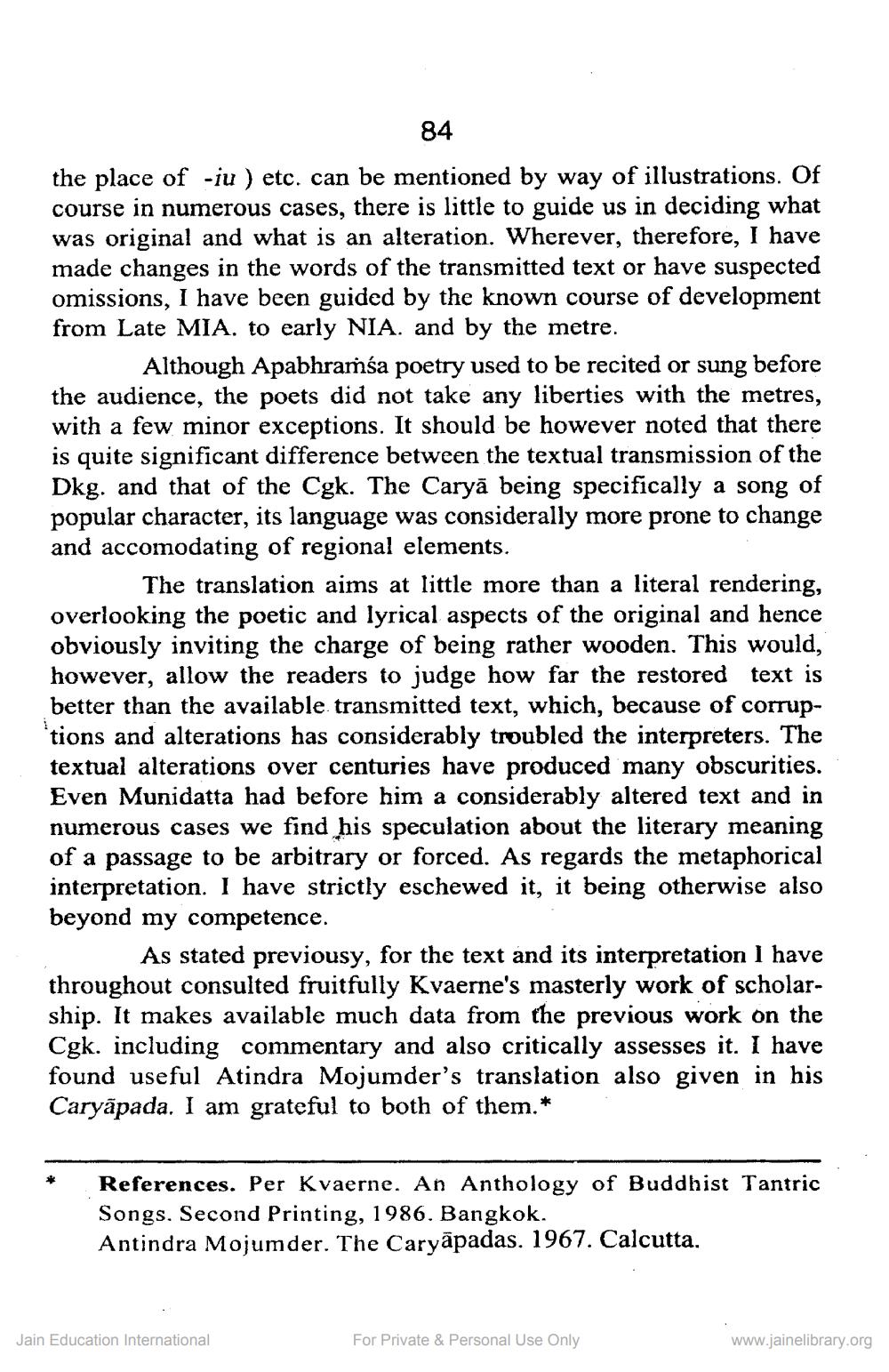________________
84
the place of -iu ) etc. can be mentioned by way of illustrations. Of course in numerous cases, there is little to guide us in deciding what was original and what is an alteration. Wherever, therefore, I have made changes in the words of the transmitted text or have suspected omissions, I have been guided by the known course of development from Late MIA. to early NIA. and by the metre.
Although Apabhraíśa poetry used to be recited or sung before the audience, the poets did not take any liberties with the metres, with a few minor exceptions. It should be however noted that there is quite significant difference between the textual transmission of the Dkg. and that of the Cgk. The Caryā being specifically a song of popular character, its language was considerally more prone to change and accomodating of regional elements.
The translation aims at little more than a literal rendering, overlooking the poetic and lyrical aspects of the original and hence obviously inviting the charge of being rather wooden. This would, however, allow the readers to judge how far the restored text is better than the available transmitted text, which, because of corrup'tions and alterations has considerably troubled the interpreters. The textual alterations over centuries have produced many obscurities. Even Munidatta had before him a considerably altered text and in numerous cases we find his speculation about the literary meaning of a passage to be arbitrary or forced. As regards the metaphorical interpretation. I have strictly eschewed it, it being otherwise also beyond my competence.
As stated previousy, for the text and its interpretation I have throughout consulted fruitfully Kvaerne's masterly work of scholarship. It makes available much data from the previous work on the Cgk. including commentary and also critically assesses it. I have found useful Atindra Mojumder's translation also given in his Caryāpada. I am grateful to both of them.*
References. Per Kvaerne. An Anthology of Buddhist Tantric Songs. Second Printing, 1986. Bangkok. Antindra Mojumder. The Caryäpadas. 1967. Calcutta.
Jain Education International
For Private & Personal Use Only
www.jainelibrary.org




